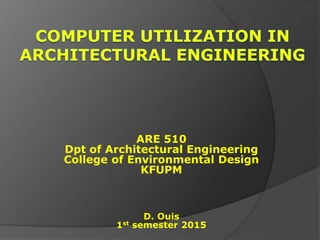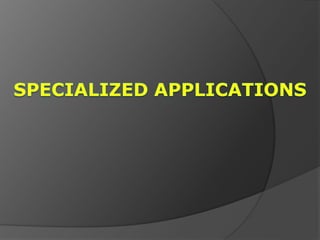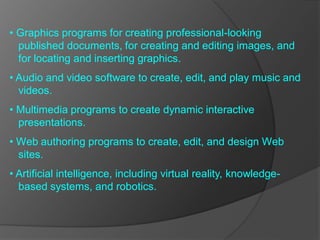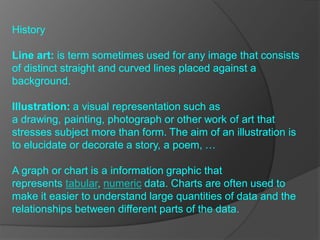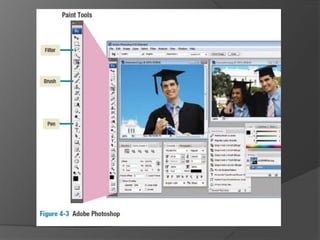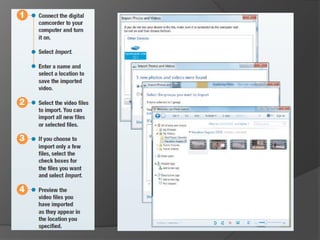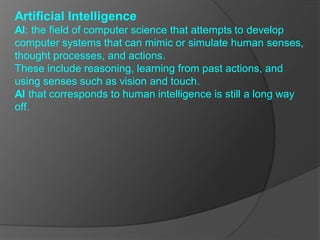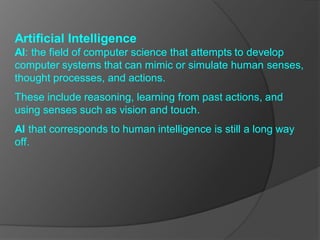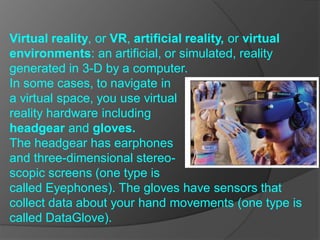System software works with end users, application software, and hardware to handle technical details. Application software, also known as apps, are used to accomplish tasks and can be basic applications like word processors or specialized applications used in specific fields. Computer graphics are visual representations created using computers that can be raster images made of pixels or vector images using mathematical formulas. Rendering is the process of generating images from 3D models by computer programs and is a major part of computer graphics. Artificial intelligence aims to develop computer systems that can mimic human senses and cognition through techniques like expert systems that use knowledge bases to provide assistance to users.
